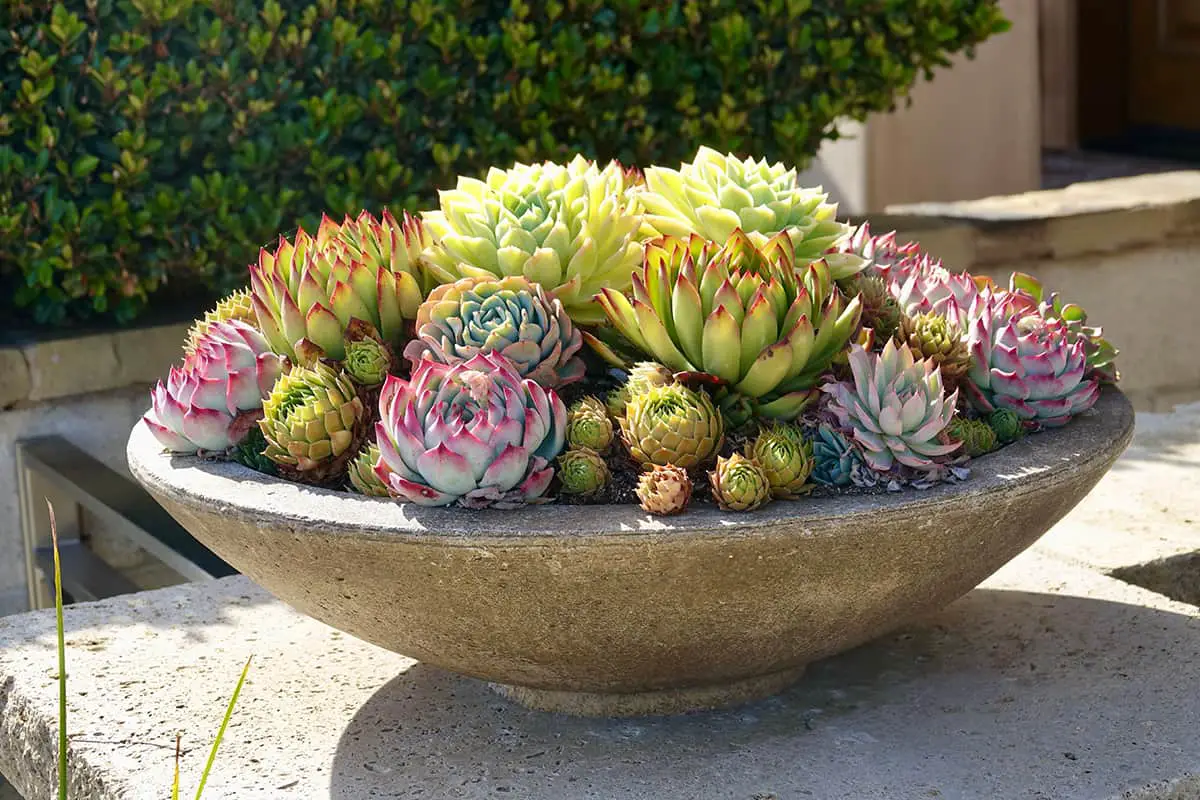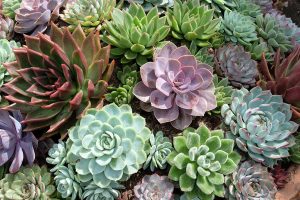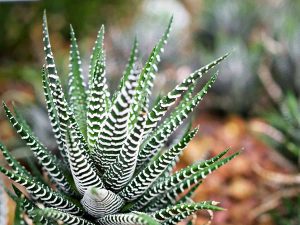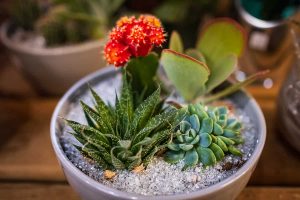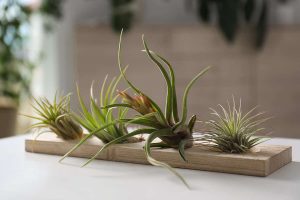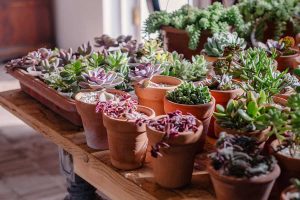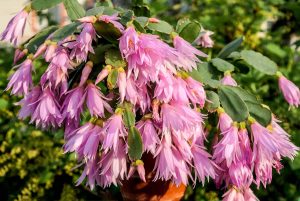In many gardens, the sight of hens and chicks clustering together, with their vibrant colors and unique shapes, is a familiar joy. These hardy plants come in various varieties, each adding its own character to the landscape. From the rosettes of ‘Sempervivum tectorum’ to the deep purples of ‘Sempervivum ‘Black’, the diversity within this plant family is astonishing.
Whether you’re an experienced gardener or just starting out, exploring the different types of hens and chicks offers a simple pleasure and an easy way to bring beauty to any space.
Table of Contents
- Sempervivum ‘Ruby Heart’
- Sempervivum ‘Commander Hay’
- Sempervivum ‘Cobweb Buttons’
- Sempervivum ‘Red Beauty’
- Sempervivum ‘Bronco’
- Sempervivum ‘Pacific Blue Ice’
- Sempervivum ‘Gold Nugget’
- Sempervivum ‘Fame Monstrose’
- Sempervivum ‘Oddity’
- Sempervivum ‘Black’
- Sempervivum ‘Green Wheel’
- Sempervivum ‘Topaz’
- Sempervivum ‘Royal Ruby’
- Sempervivum ‘Jade Rose’
- Sempervivum ‘Desert Bloom’
- Sempervivum ‘Sir William Lawrence’
- Sempervivum ‘Pilioseum’
- Sempervivum ‘Lilac Time’
- Sempervivum ‘Silver King’
- Sempervivum ‘Violet Queen’
- Sempervivum ‘Pacific Devil’s Food’
- Sempervivum ‘Mahogany’
- Sempervivum ‘Terracotta Baby’
- Sempervivum ‘Emerald Empress’
- Sempervivum ‘Glowing Embers’
- Sempervivum ‘Saturn’
- Sempervivum ‘Greenwich Time’
- Sempervivum ‘Calcareum’
- Sempervivum ‘Frost and Flame’
- Sempervivum ‘Tectorum’
Sempervivum ‘Ruby Heart’
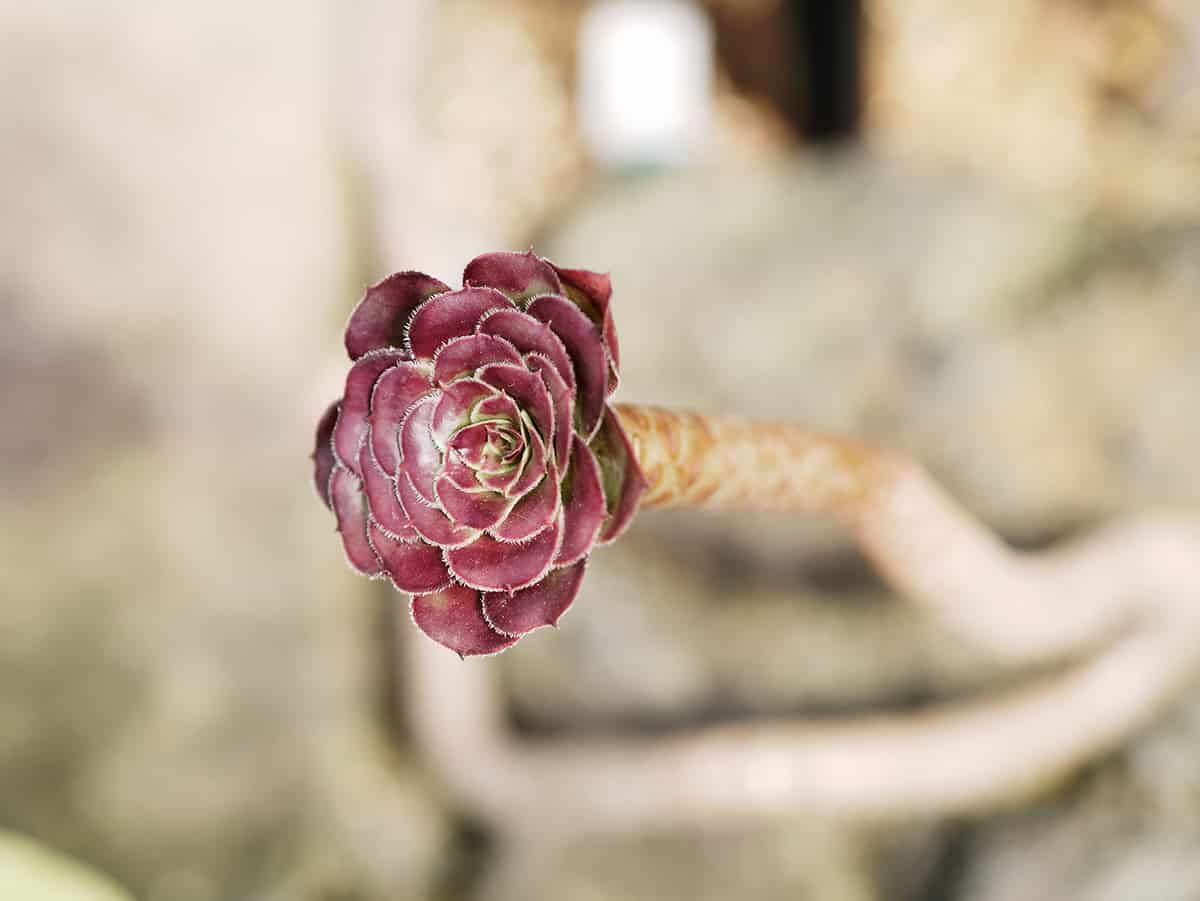
Sempervivum ‘Ruby Heart’, with its distinctive color and succulent rosettes, is a superb choice for your rock garden. Its leaves are thick and fleshy, featuring shades of green at the base that transition to a deep ruby red at the tips. This variety flourishes in full sun but can tolerate partial shade, showcasing a richer red hue in brighter light.
As a low-maintenance perennial, you’ll find Sempervivum ‘Ruby Heart’ is drought-tolerant once established. It prefers well-draining soil, a typical need for succulents to prevent root rot. In the summer, you can expect this variety to send up tall flower stalks, blooming with pink to pale red flowers, which attract pollinators.
Propagation of ‘Ruby Heart’ is easy; it produces offsets or “chicks” which can be removed and replanted. These chicks ensure that the plant spreads and fills in areas, creating a mat-like appearance. This feature also earns the plant its charming common name, “Hens and Chicks”.
Sempervivum ‘Commander Hay’
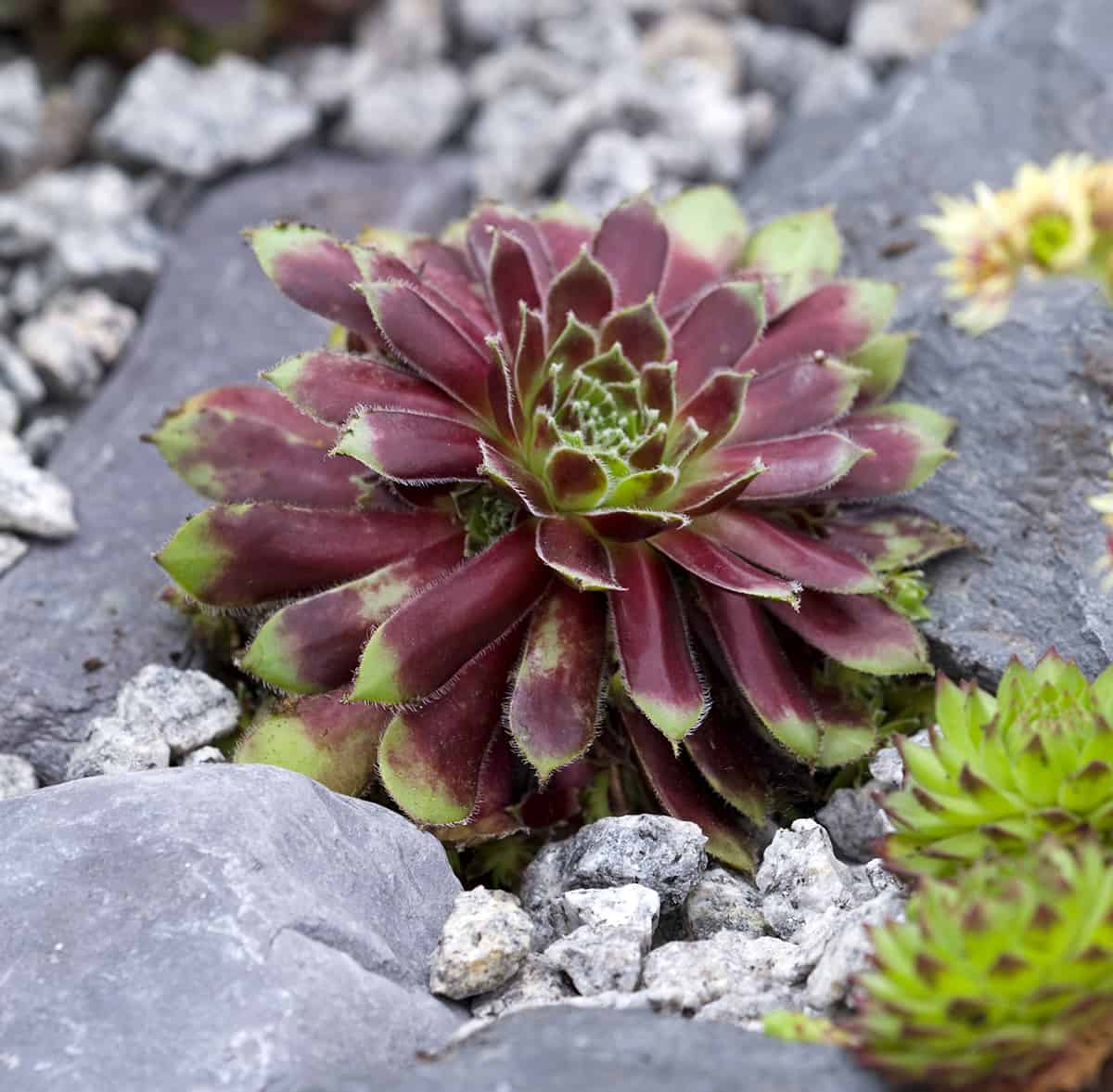
Sempervivum ‘Commander Hay’ is a distinctive succulent in your garden. Its rosettes feature deep red and green hues. These colors become more intense during cooler temperatures.
This variety is known for its resilience. You can count on ‘Commander Hay’ to withstand poor soils. It also tolerates frost, making it a robust choice for various climates.
Propagation is straightforward with ‘Commander Hay’. Simply separate the offsets, also called chicks, from the parent rosette. This ensures a continuous display of these eye-catching plants.
Care for ‘Commander Hay’ involves minimal watering. Ensure good drainage to keep your plants healthy. Full sun brings out the best colors in the rosettes. In hotter regions, provide partial shade to protect the leaves.
Sempervivum ‘Cobweb Buttons’
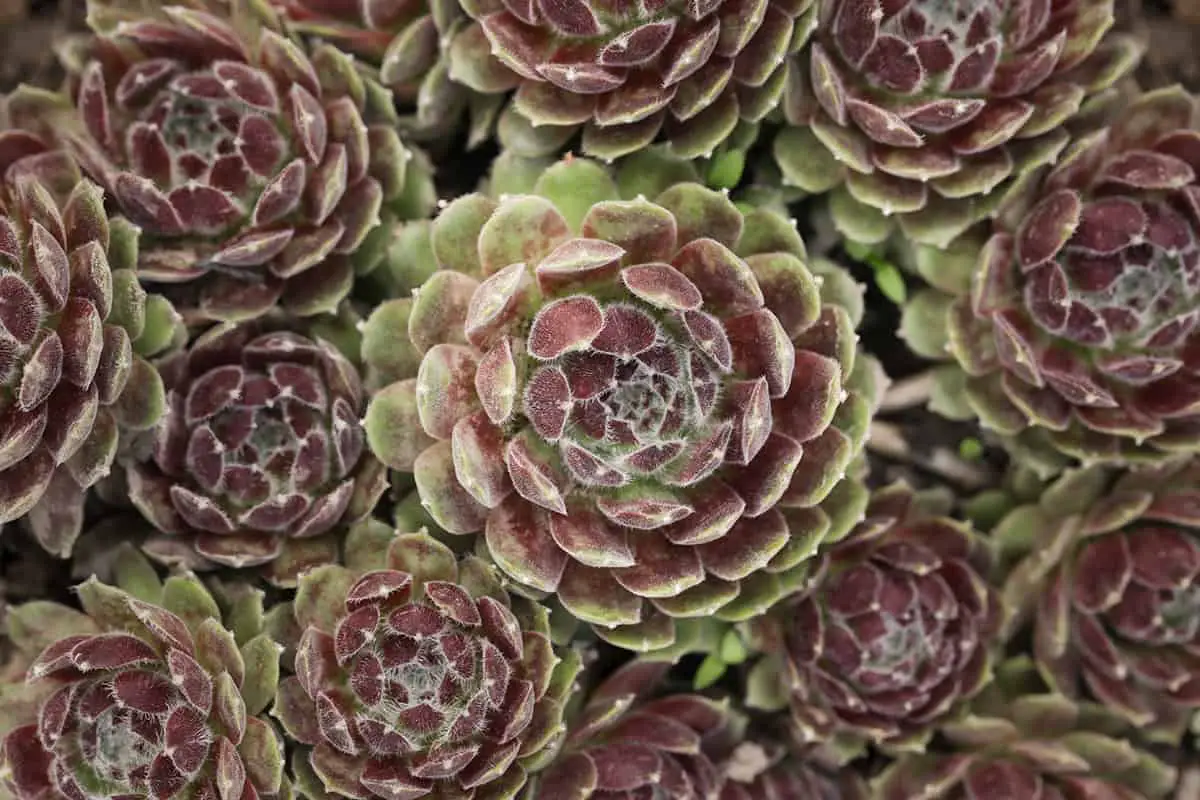
Sempervivum ‘Cobweb Buttons’ captures attention with its unique appearance. Its rosettes are small, making them ideal for compact spaces. Each cluster is covered in web-like filaments. These threads evoke images of cobwebs, giving this plant its name.
Your garden shines with Cobweb Buttons’ year-round appeal. They are hardy succulents, thriving in tough conditions. Despite extreme weather, they maintain a vibrant presence. This drought-tolerant plant adds resilience to your landscaping.
You’ll easily propagate ‘Cobweb Buttons’ by separating offsets. These chicks allow for effortless growth and multiplication. It’s perfect for rock gardens and containers, offering a textural contrast.
Care for ‘Cobweb Buttons’ is straightforward. They need well-draining soil and minimal watering. Ensure they get enough sunlight, and your ‘Cobweb Buttons’ will flourish.
Sempervivum ‘Red Beauty’
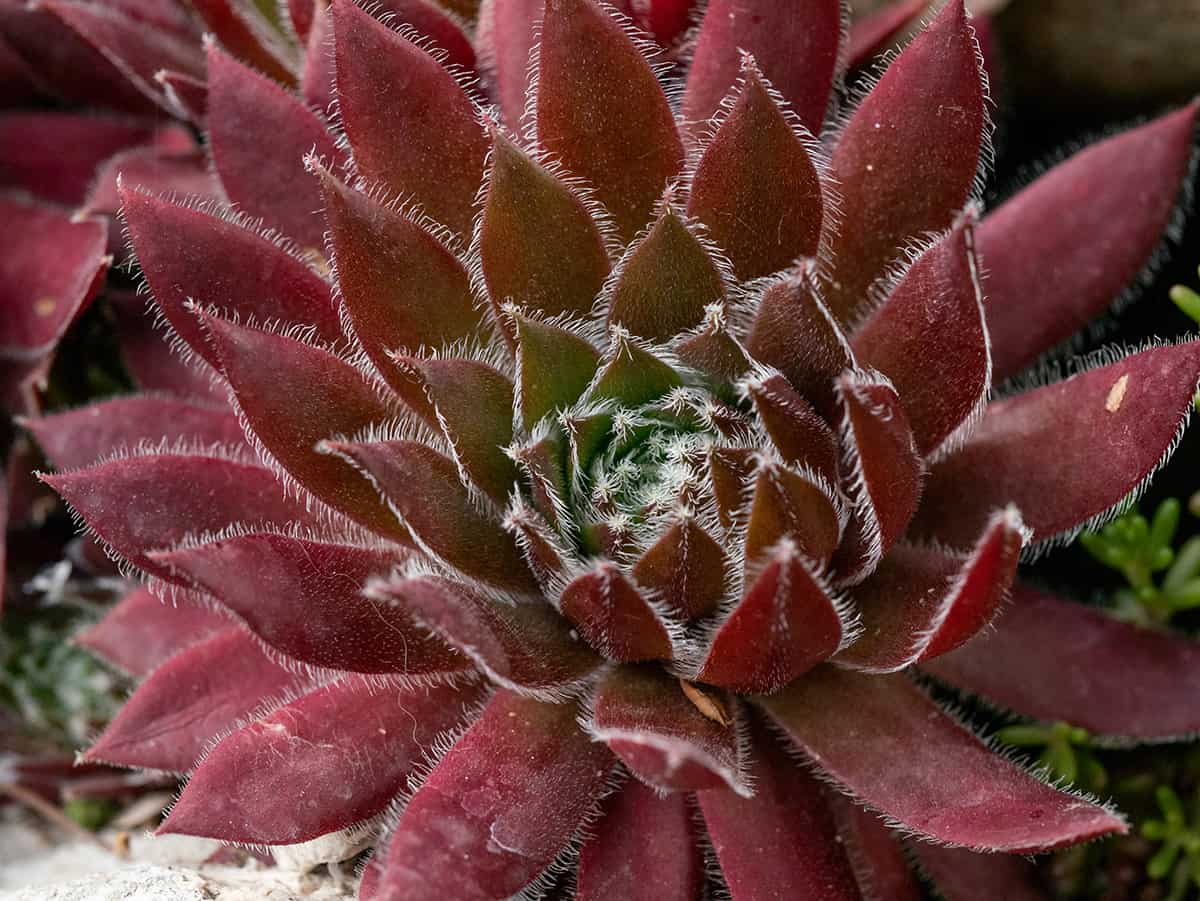
Sempervivum ‘Red Beauty’ is a striking variety of the Hens and Chicks plant family. Its rosettes consist of thick, fleshy leaves. These leaves showcase a deep red hue, which intensifies in full sun. In shade, a greener color will prevail with red tips.
This plant is suitable for rock gardens, containers, and outdoor succulent collections. The ‘Red Beauty’ is hardy, which means it withstands cold winters well. Your garden will benefit from its year-round interest.
Expect pink flowers to bloom in summer. They rise above the foliage on tall stalks, adding an extra layer of beauty to your garden. Post-flowering, remove the spent flower stalk to maintain aesthetics.
This succulent requires little water once established. Ensure good drainage to prevent root rot. Your ‘Red Beauty’ will multiply, creating a mat of colorful rosettes over time. This multiplication happens as the “chicks” spread around the “hen.”
Sempervivum ‘Bronco’
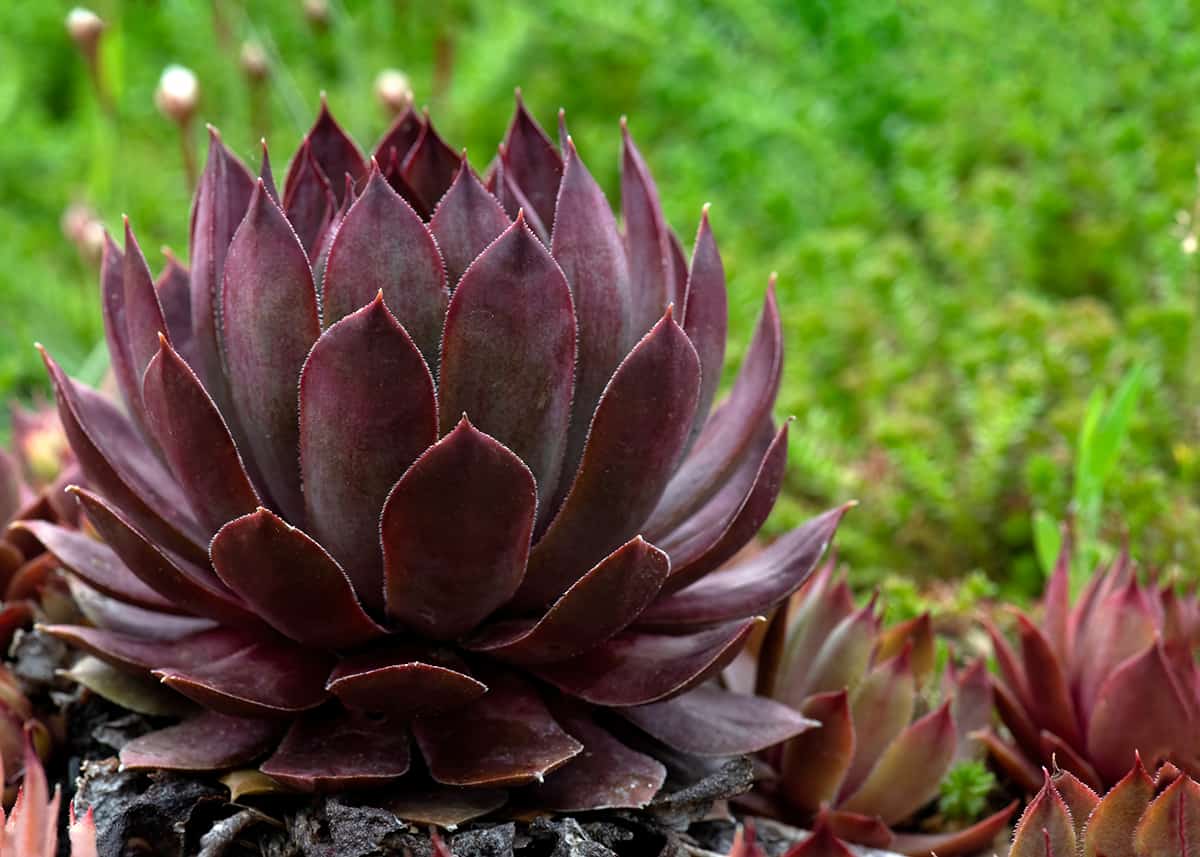
Sempervivum ‘Bronco’ is a type of Hens and Chicks plant renowned for its resilience and easy care. This succulent forms rosettes of fleshy leaves with a distinctive bronze coloring. Over time, ‘Bronco’ can spread to form a dense mat, making it an excellent ground cover option for your garden.
Care for your Sempervivum ‘Bronco’ involves placing it in well-draining soil and giving it plenty of sunlight. Despite this, it tolerates partial shade, which allows for versatile planting locations. It’s important to limit overwatering as it can be detrimental to the plant’s health.
This variety, like other Hens and Chicks, produces offsets or “chicks” that cluster around the parent “hen.” These can be easily propagated to expand your collection or share with others. The plant’s hardy nature makes it a popular choice for rock gardens or containers.
During the summer, you may witness ‘Bronco’ sending up a tall flower stalk. The bloom signifies the beginning of the plant’s next life cycle, as the “hen” will die after flowering, leaving the “chicks” to continue growing. This process emphasizes the self-renewing nature of Sempervivum ‘Bronco.’
Sempervivum ‘Pacific Blue Ice’
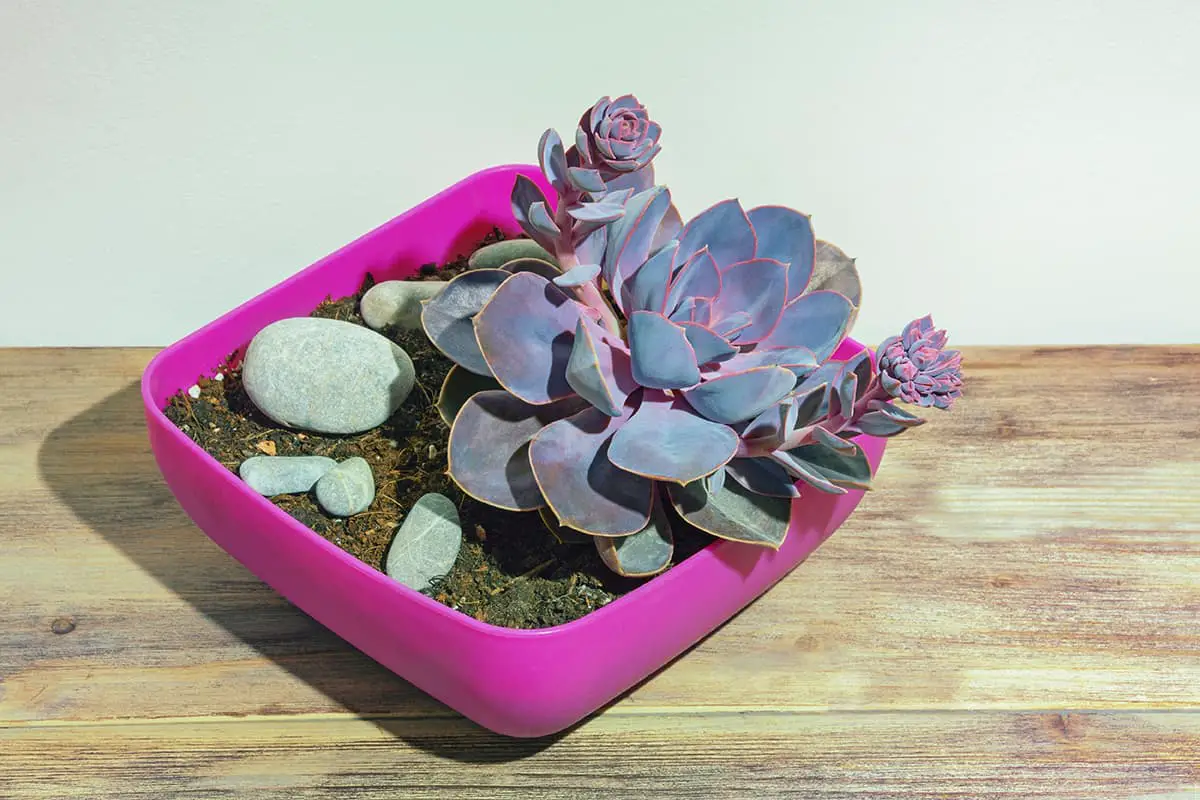
The Sempervivum ‘Pacific Blue Ice’ is a striking variety of hens and chicks. You’ll notice its rosettes have a striking blue hue, making them stand out in rock gardens. They’re compact and hardy, ideal for cold climates.
In spring, your ‘Pacific Blue Ice’ will develop a silvery overlay. This unique feature enhances the plant’s visual appeal. It’s a living decoration that changes with the seasons.
You’ll find this variety loves full sun. They thrive with little water, showcasing succulents’ easy-care nature. Remember to provide well-draining soil to keep your ‘Pacific Blue Ice’ happy.
Sempervivum ‘Gold Nugget’
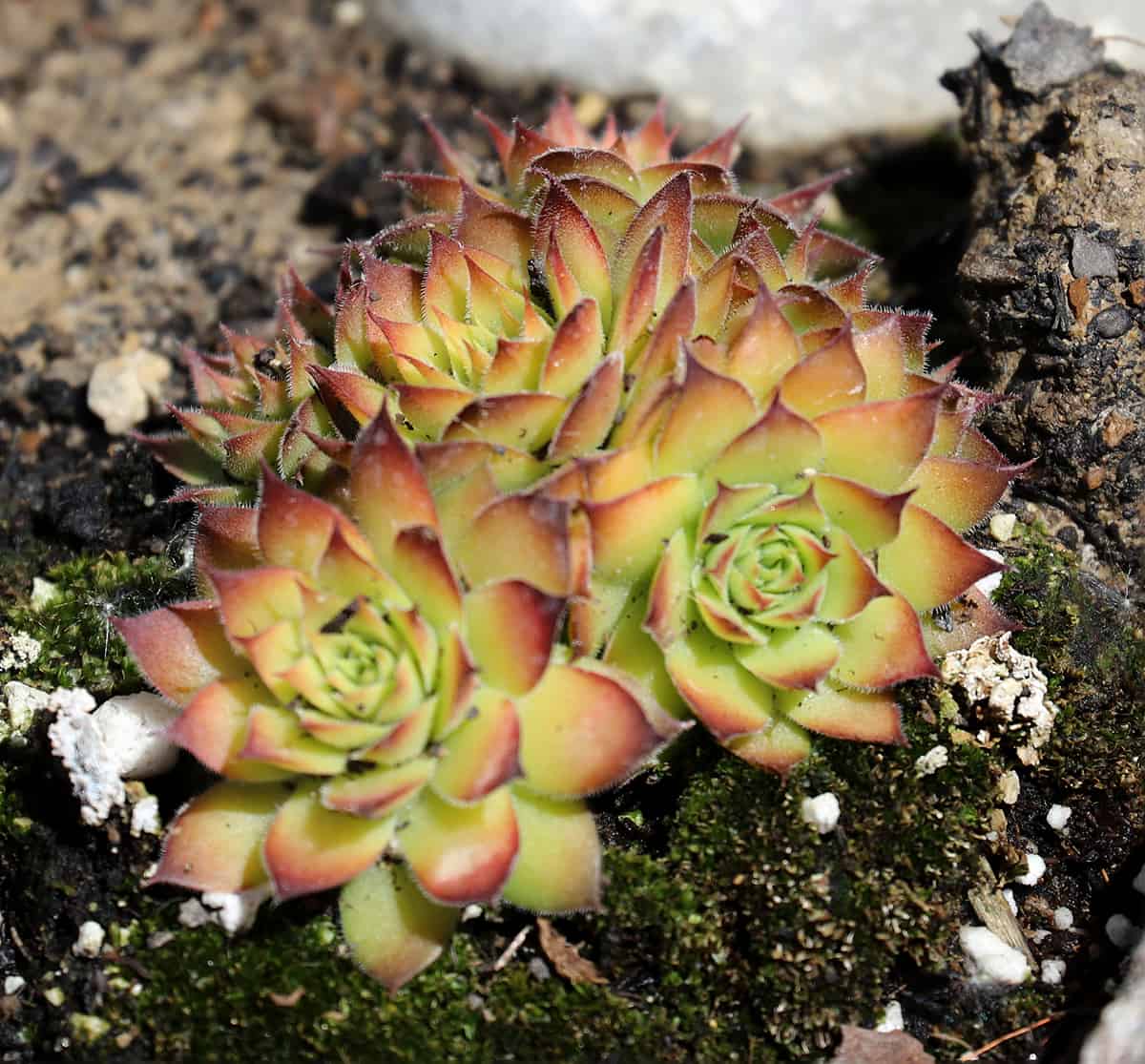
Sempervivum ‘Gold Nugget’ is a vibrant succulent. You’ll notice its golden-yellow leaves. They can turn a bright red during colder months. This variety is a highlight in any succulent collection for its color-changing leaves.
You can easily grow ‘Gold Nugget’. It requires minimal care. Ensure you provide well-draining soil. Like most hens and chicks, this plant needs plenty of sunlight. With basic care, ‘Gold Nugget’ rewards you with vivid colors.
Propagation is a straightforward process for ‘Gold Nugget’. It produces offsets, often called “chicks.” You can separate these from the main rosette, the “hen.” This way, you can spread the colorful joy of ‘Gold Nugget’ around.
For best results, winter protection may be advised. Despite being hardy, ‘Gold Nugget’ may appreciate a little extra shelter. This ensures the bright hues return with vigor when spring arrives.
Sempervivum ‘Fame Monstrose’
Sempervivum ‘Fame Monstrose’ has distinctive features. Its rosettes are tightly packed and often exhibit a cobweb-like appearance. This is due to fine hairs across its leaves.
Your garden benefits from the plant’s hardiness. Sempervivum ‘Fame Monstrose’ tolerates severe temperatures. From scorching summers to freezing winters, it endures. This variety requires little water, making it ideal for drought-prone areas.
You’ll notice its growth pattern is low and spread out. The plant creates a ground cover that suppresses weeds. With Sempervivum ‘Fame Monstrose’, you get a maintenance-free addition to your space. This succulent also thrives in containers.
The color of Sempervivum ‘Fame Monstrose’ varies. It can range from deep green to reddish hues. In summer, mix with peers for a vibrant display. It’s a forgiving plant, perfect for beginner gardeners.
Sempervivum ‘Oddity’
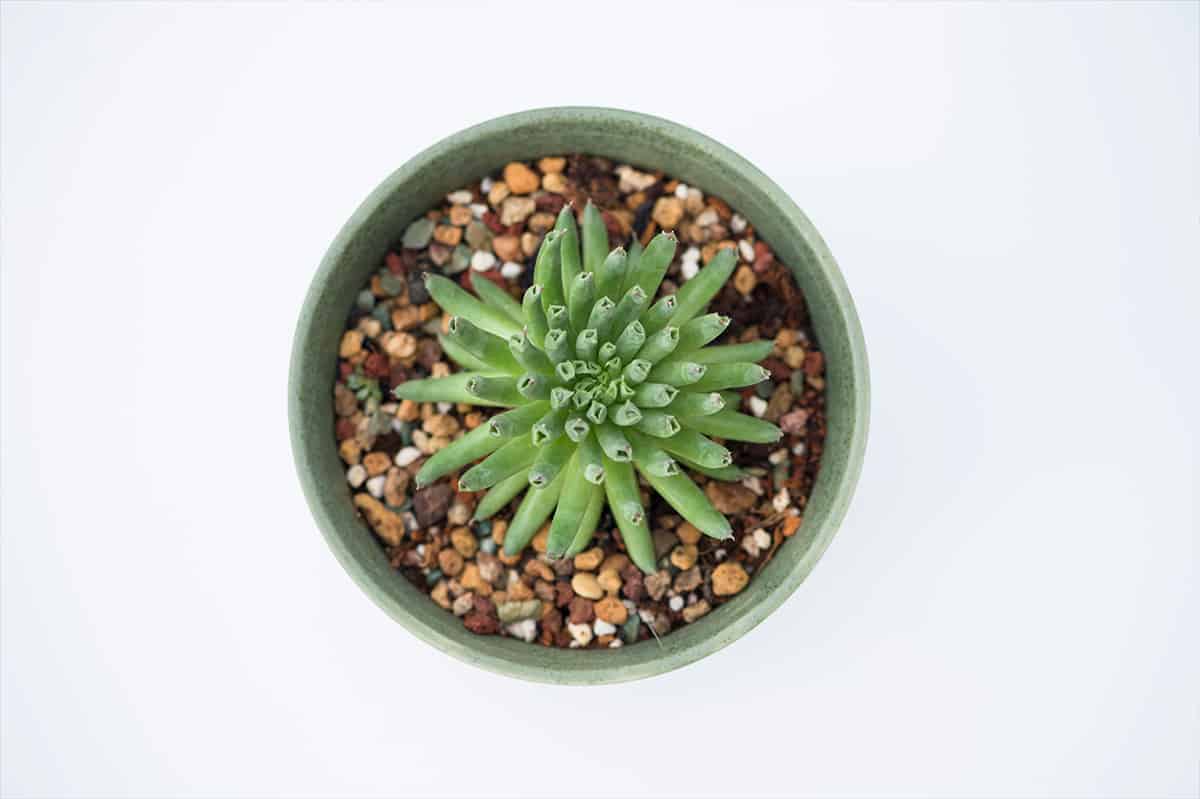
With its quirky tube-like leaves, Sempervivum ‘Oddity’ stands out from other members of the Hens and Chicks family. The pointed tips and vibrant green color make this plant a curious addition to your garden.
You’ll find that ‘Oddity’ grows well in containers or rock gardens, and it’s known for being low-maintenance. This plant prefers well-drained soil and thrives in full sun to partial shade. It’s especially tolerant of dry conditions once established.
The charm of Sempervivum ‘Oddity’ also lies in its hardiness. It’s resistant to deer and can handle cold temperatures well. Expect this plant to spread as it produces offsets, but its non-invasive nature means it won’t overrun your garden space.
Your Oddity will bloom in summer, offering small, pinkish flowers. While the flowers are short-lived, they add a layer of interest to the already fascinating plant.
Sempervivum ‘Black’
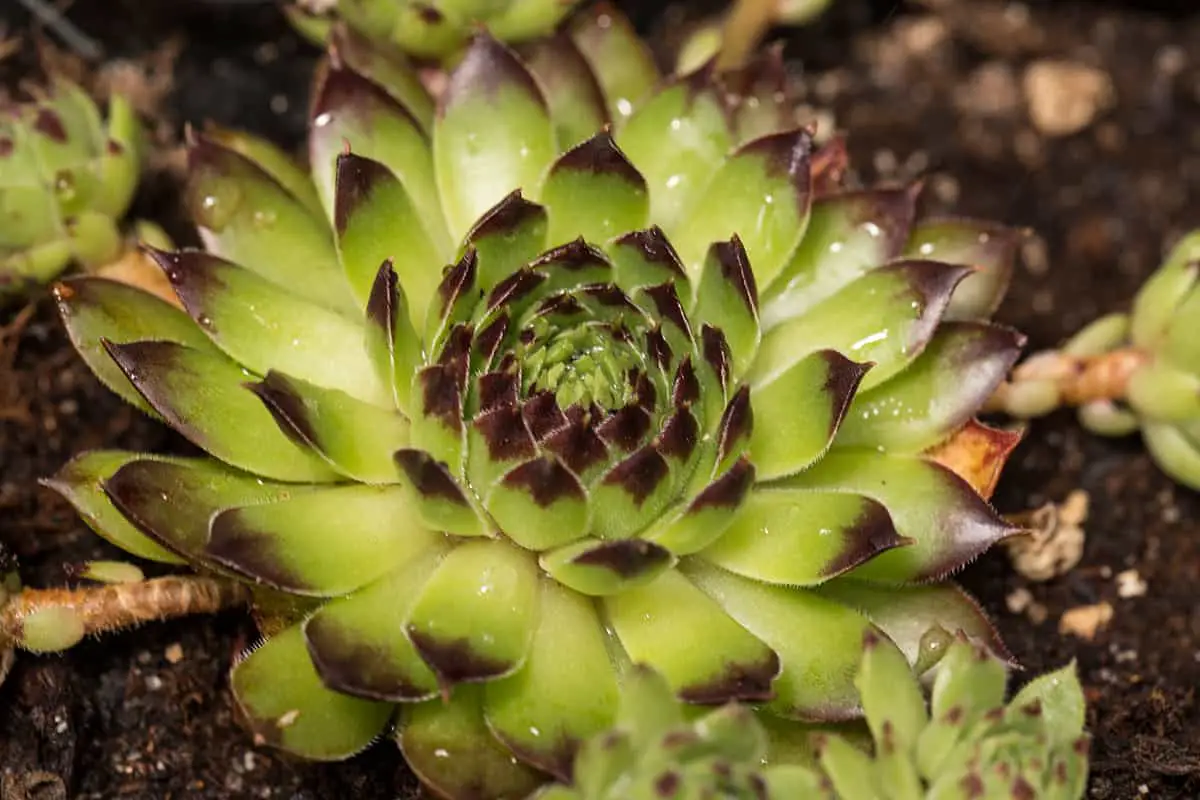
You’ll recognize Sempervivum ‘Black’ by its deep purple to almost black foliage. These succulents feature rose-shaped rosettes with fleshy leaves. They make a visual statement in your garden with their unique color.
This succulent thrives in well-draining soil. You need to ensure it gets full sunlight for the best color development. Sempervivum ‘Black’ is known for its hardiness and low maintenance, making it an ideal choice if you’re seeking a plant that’s both beautiful and easy to care for.
During spring and summer, Sempervivum ‘Black’ produces star-shaped flowers. It adds seasonal interest to your outdoor space. After flowering, the main rosette, “the hen,” typically dies. However, this plant continually produces offsets, “the chicks,” ensuring its presence in your garden year after year.
To propagate Sempervivum ‘Black’, you can separate the offsets. You can then plant these new chicks to expand your collection or share with others.
Sempervivum ‘Green Wheel’
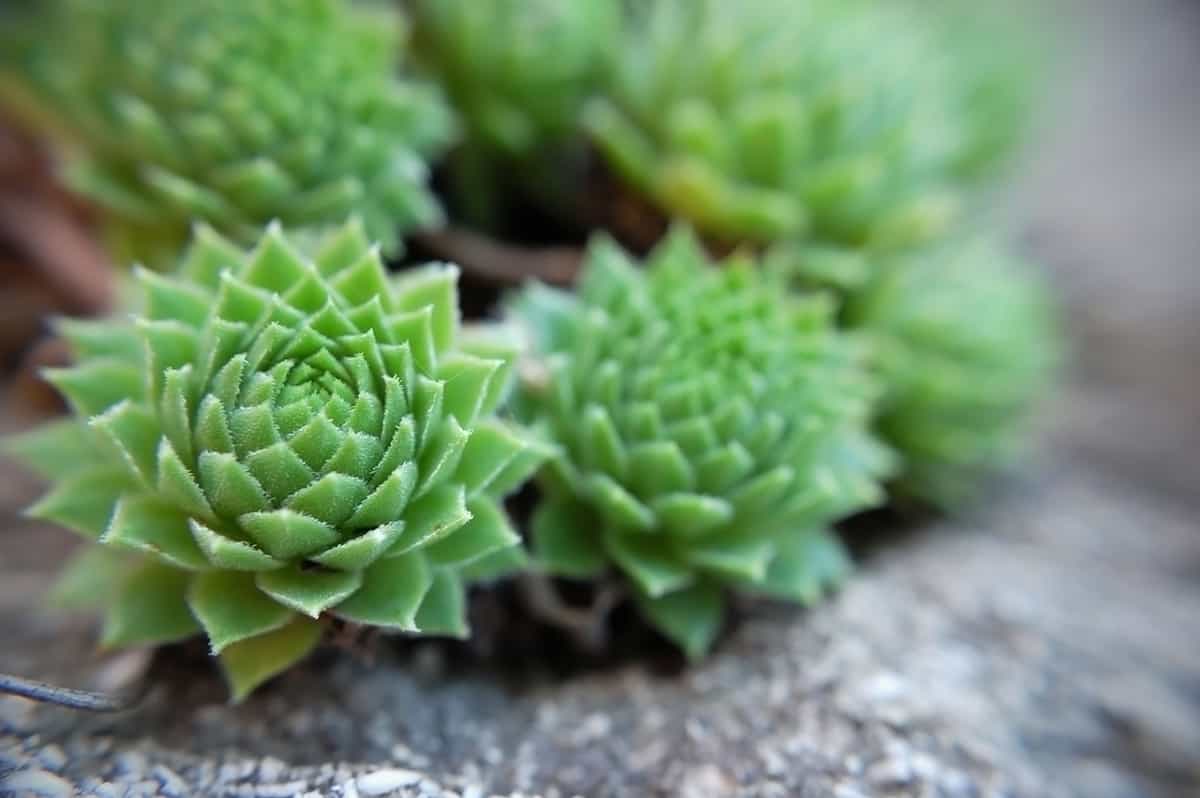
Sempervivum ‘Green Wheel’ is a captivating succulent. Distinctive for its tight rosette shape, this plant features symmetrical green leaves. It’s a popular choice for rock gardens and containers.
You’ll appreciate its low maintenance. Green Wheel thrives in well-draining soil and requires minimal water. It’s resilient to cold temperatures, making it versatile for various climates.
The Green Wheel propagates effortlessly. It produces offsets that enable easy reproduction. These offspring are casually known as “chicks,” giving rise to the name “Hens and Chicks” for the larger Sempervivum family.
For a lush ground cover, plant Green Wheel in groups. It prefers full sunlight to partial shade.
Sempervivum ‘Topaz’
Sempervivum ‘Topaz’ is a striking variety of the Hens and Chicks plant family. This succulent boasts rosettes of thick, fleshy leaves with a unique coloration. The leaves have a green base with a reddish overlay, giving them a jewel-like appearance similar to the gemstone topaz.
You’ll find Sempervivum ‘Topaz’ to be a hardy and resilient plant. It thrives in well-drained soil and full to partial sunlight. With appropriate care, it can resist harsh conditions, such as drought and freezing temperatures.
Your Sempervivum ‘Topaz’ will reproduce by creating offsets or “chicks.” These can be easily propagated to expand your collection or share with friends. This plant makes an eye-catching addition to rock gardens, containers, and as ground cover.
Remember, the beauty of your Sempervivum ‘Topaz’ develops best during cooler months. You might notice a more vivid hue to the leaves as temperatures drop.
Sempervivum ‘Royal Ruby’
Sempervivum ‘Royal Ruby’ boasts deep red to burgundy leaves, which become more intense in color during the cooler months. Your garden will shine with its vibrant hues.
These plants form tight rosettes that can spread through offsets. They are perfect for rock gardens or containers. You’ll find ‘Royal Ruby’ is not just beautiful but also hardy.
This succulent variety demands minimal care. It thrives in well-drained soil and can tolerate drought. You will need to water it sparingly.
During spring and summer, ‘Royal Ruby’ produces star-shaped flowers. They add an extra layer of appeal to this already captivating plant. Your ‘Royal Ruby’ will flourish with full sun to partial shade.
Sempervivum ‘Jade Rose’
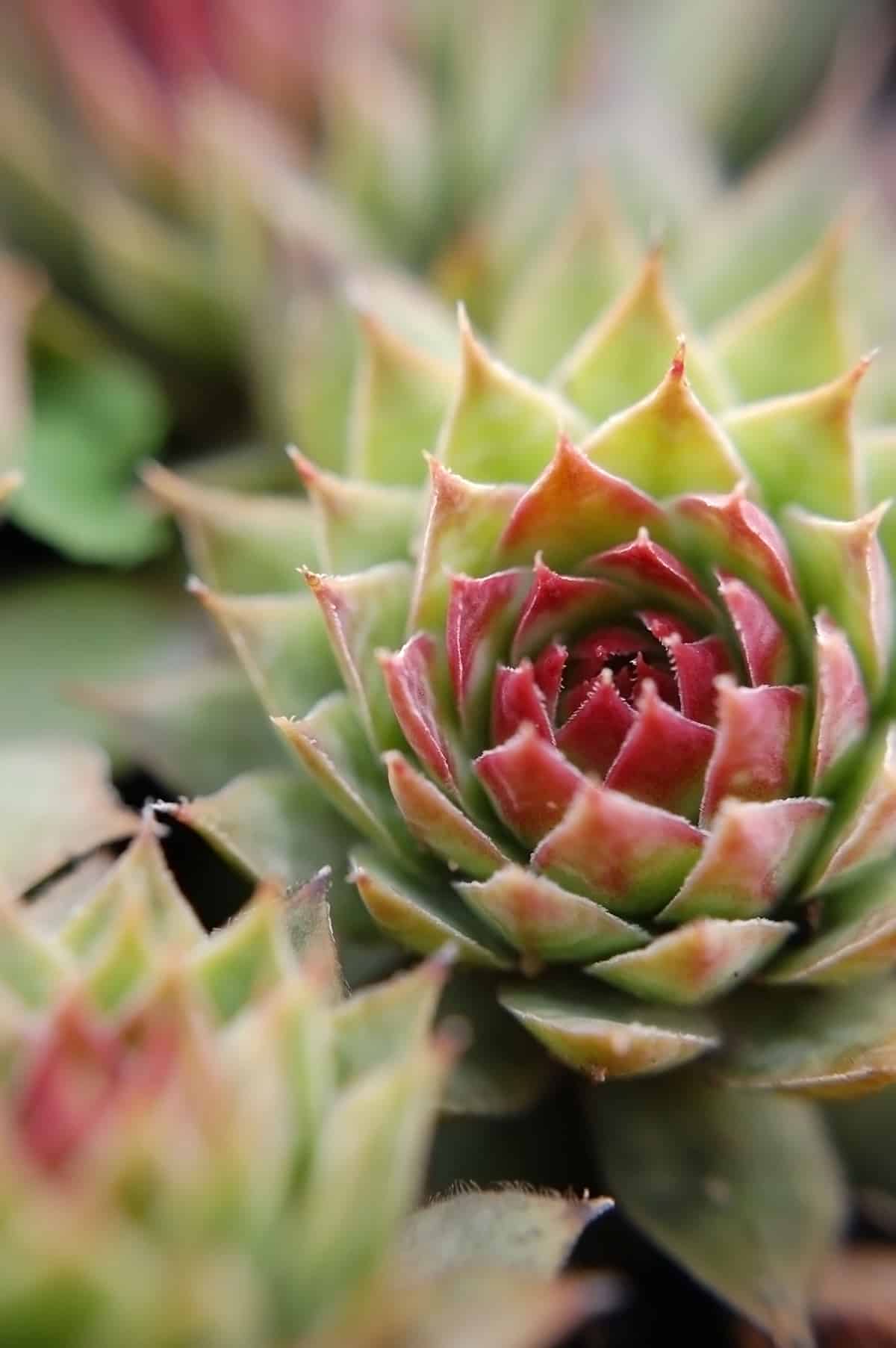
The ‘Jade Rose’ variety of Sempervivum is a captivating succulent, known for its jewel-toned rosettes that draw the eye. Its leaves display a striking green hue with a red-purple tint, distinguishing it within the Hens and Chicks family, so named for its reproductive method.
This plant flourishes under conditions ranging from full sun to partial shade, favoring well-draining soil that is typical for succulents. To maintain its health, opt for sandy or gravelly soil mixes that ensure good drainage.
When it comes to watering, ‘Jade Rose’ requires a light touch. It’s crucial to avoid overwatering, as this can cause root rot. Wait until the soil has completely dried out before watering again to ensure the plant’s well-being.
In terms of hardiness, ‘Jade Rose’ is exceptionally resilient, capable of withstanding cold winters. It is suited to USDA hardiness zones 4 through 8, demonstrating its ability to survive freezing temperatures and thrive as a robust outdoor plant.
Sempervivum ‘Desert Bloom’
You’ll find the Sempervivum ‘Desert Bloom’ is a captivating variety of the hens and chicks family. These plants exhibit vibrant rosettes with colors ranging from deep greens to subtle purples. The ‘Desert Bloom’ thrives in full sun to partial shade.
This variety requires minimal care. Ensure quick drainage and avoid overwatering for optimal health. In spring, ‘Desert Bloom’ may surprise you with star-shaped flowers.
Sempervivum ‘Sir William Lawrence’
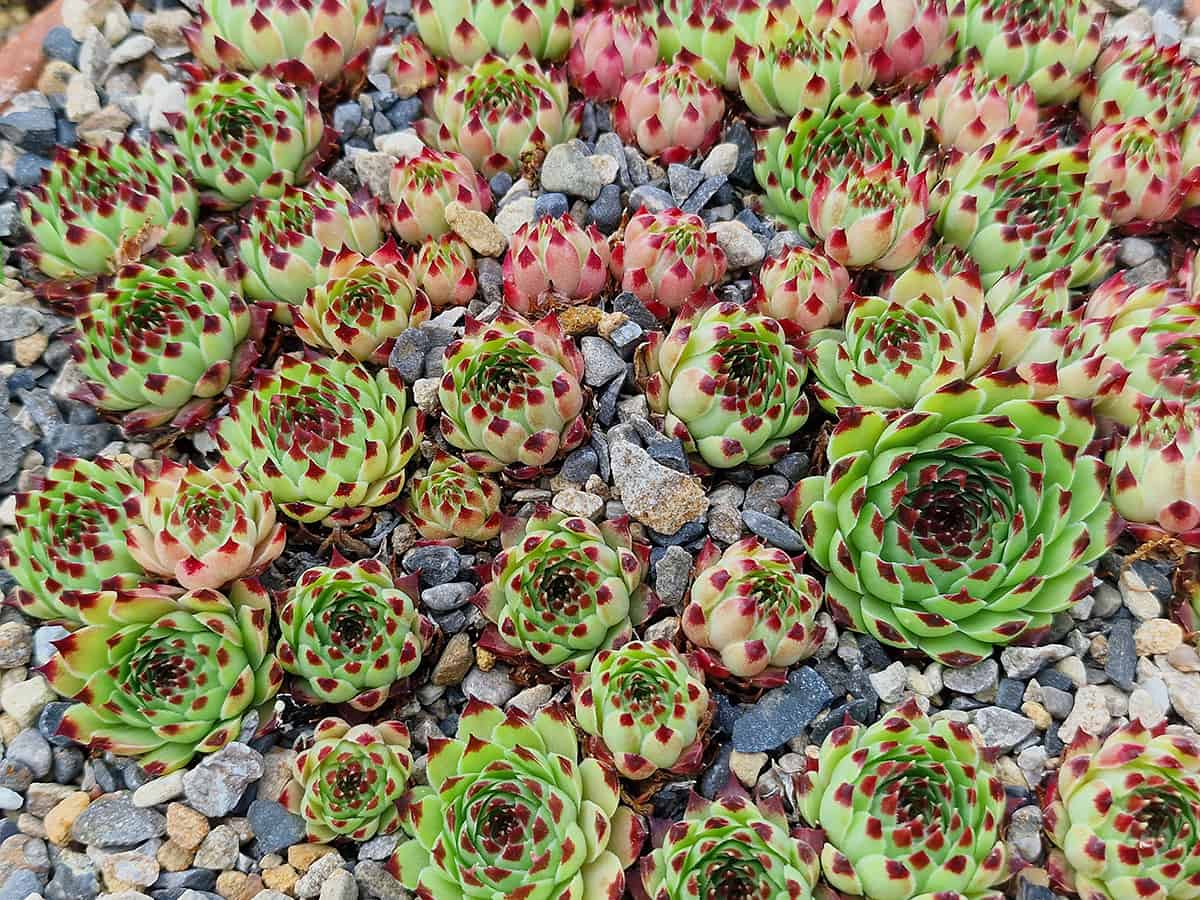
Sempervivum ‘Sir William Lawrence’ is a striking variety of Hens and Chicks. This plant features tight rosettes showcasing deep red and green hues. It thrives in well-drained soil and requires full sun to part shade to maintain its vibrant color.
Your garden will benefit from the drought tolerance of ‘Sir William Lawrence’. Regular watering during dry spells keeps it healthy. As a perennial, it withstands harsh winters well, especially in USDA zones 4 through 8.
Propagation of ‘Sir William Lawrence’ is simple. You can encourage the growth of new “chicks” by separating them gently from the “hen”. This makes it a perfect choice for sharing with fellow garden enthusiasts.
Care for ‘Sir William Lawrence’ is manageable. Full sun exposure promotes the richest color expression. It’s perfect for rock gardens, containers, or as ground cover, adding a hardy splash of color to your outdoor space.
Sempervivum ‘Pilioseum’
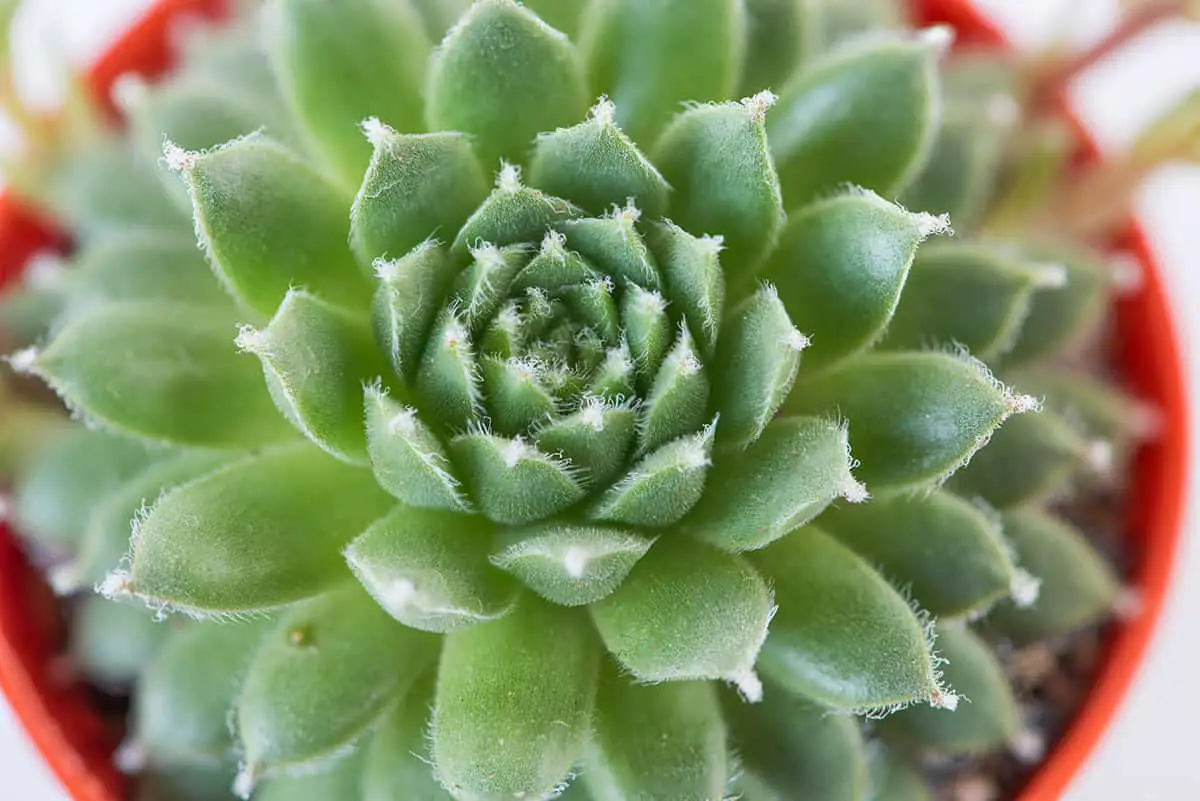
Sempervivum ‘Pilioseum’, a particular variety of the Hens and Chicks plant, boasts distinct features. Your garden will benefit from its low-maintenance nature. This perennial succulent forms rosettes of fleshy, hairy leaves. The ‘Pilioseum’ variety thrives in full sun to partial shade.
You’ll find the Sempervivum ‘Pilioseum’ is hardy. It easily survives cold winters and requires minimal watering. Its leaves are green with a hint of red. In the right conditions, it will reward you with pink flowers in summer.
For propagation, you can rely on its offsets. These small rosettes detach easily for replanting. Include Sempervivum ‘Pilioseum’ in your collection for its unique texture and durability.
Sempervivum ‘Lilac Time’
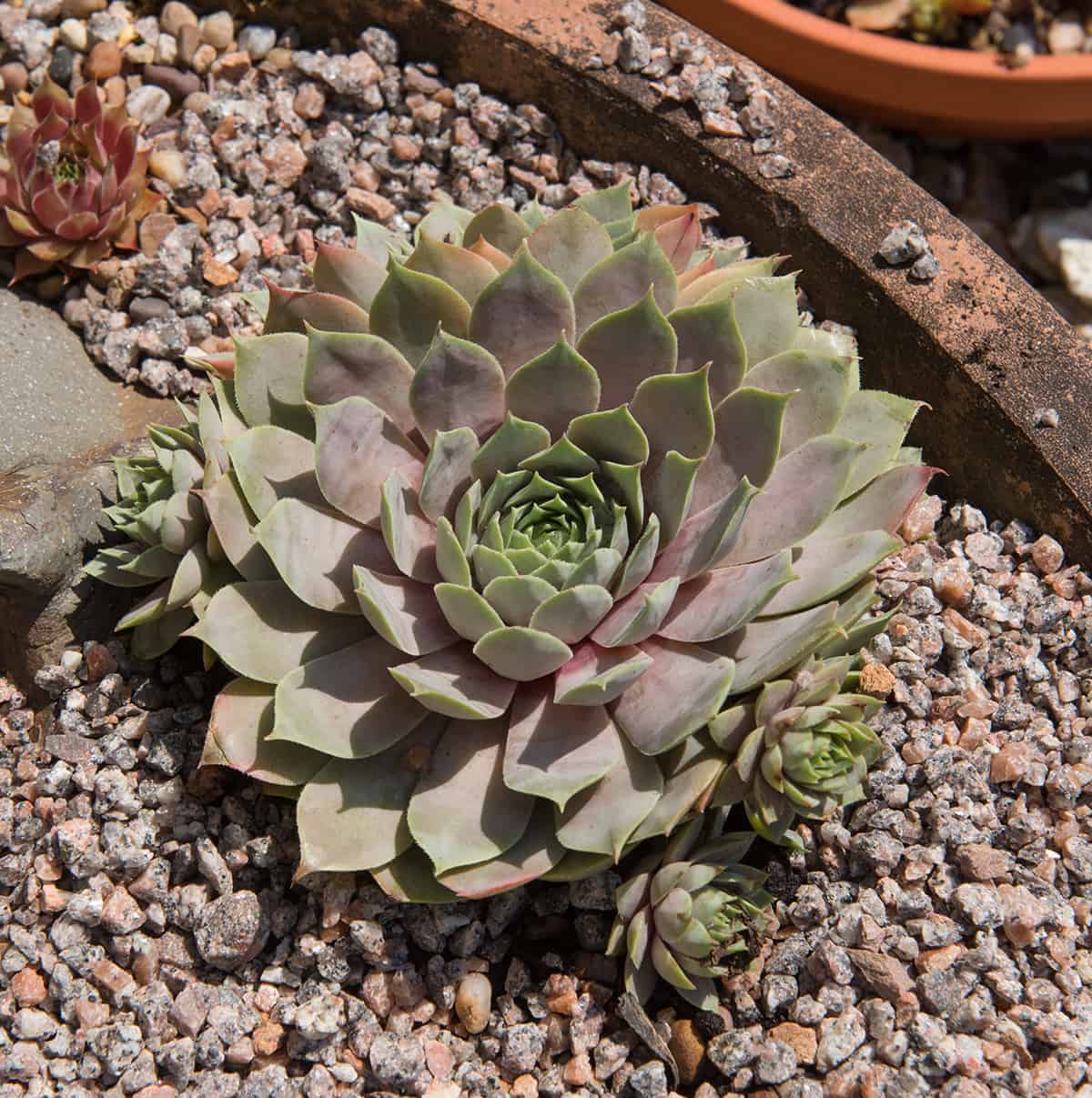
Sempervivum ‘Lilac Time’ is a succulent you’ll want in your garden. It’s celebrated for its rosettes of green leaves that develop lilac tips when exposed to full sun. This variety thrives in conditions that mimic alpine environments: well-draining soil and cooler temperatures are ideal.
Each rosette reaches a modest size, making Sempervivum ‘Lilac Time’ an excellent choice for rock gardens or containers. During the summer, you can expect to see it bloom. It produces pink to light purple flowers that attract pollinators.
This plant’s care is straightforward. Ensure it receives enough sunlight and infrequent but deep waterings. Being a low-maintenance option, it’s perfect for gardeners of any level.
Sempervivum ‘Silver King’
Sempervivum ‘Silver King’ is a striking succulent that enriches your rock garden with its elegance. You will recognize it for its large rosettes. The leaves are thick, fleshy, and have a silvery-green hue that shines in the sun. This variety forms a tight cluster of rosettes that can span up to 6 inches in diameter.
Your ‘Silver King’ is winter hardy. It thrives in cold climates where other plants may struggle. With good care, this plant will last through tough winters. When planting, ensure proper drainage to prevent root rot. This plant demands little water, embodying its drought-resistant nature.
This sempervivum variety blooms in the heart of summer. You’ll see pink flowers on tall stalks attracting pollinators to your garden. But don’t worry; this plant readily produces offshoots, or “chicks,” maintaining its presence.
Sempervivum ‘Violet Queen’
Sempervivum ‘Violet Queen’ thrives in your garden with minimal care. This succulent forms attractive rosettes with purple-tipped leaves. You’ll enjoy how it adds a pop of color to rock gardens or containers.
Sunlight plays a role in the color intensity of ‘Violet Queen’. Full sun exposure will bring out the vibrant hues, while less light keeps the leaves greener.
With ‘Violet Queen’, you don’t need to worry much about watering. Its drought-tolerant nature makes it a fit for busy gardeners. Ensure it has well-draining soil to prevent root rot.
You’ll find propagation straightforward. ‘Violet Queen’ produces offsets that can be easily separated and replanted. This means you can expand your collection without buying new plants.
Winter hardiness is another trait of ‘Violet Queen’. It withstands cold temperatures well, making it a year-round outdoor plant in many climates.
Sempervivum ‘Pacific Devil’s Food’
Sempervivum ‘Pacific Devil’s Food’ features deep burgundy to chocolate brown rosettes. The coloring intensifies under stress from full sun or cold. In your rock garden or container, it adds rich, dark tones.
The rosettes of ‘Pacific Devil’s Food’ grow up to four inches in diameter. You’ll find they produce offsets readily in the growing season. These can be detached to propagate new plants. They are perfect for expanding your succulent collection.
Care for ‘Pacific Devil’s Food’ is straightforward. It requires well-draining soil. Ensure it receives regular sunlight, though some afternoon shade is beneficial in very hot climates. Water it sparingly; this plant is drought-tolerant.
In springtime, ‘Pacific Devil’s Food’ may surprise you with star-shaped, pink flowers. The blooms grow atop tall stems, contrasting the dark foliage.
Sempervivum ‘Mahogany’
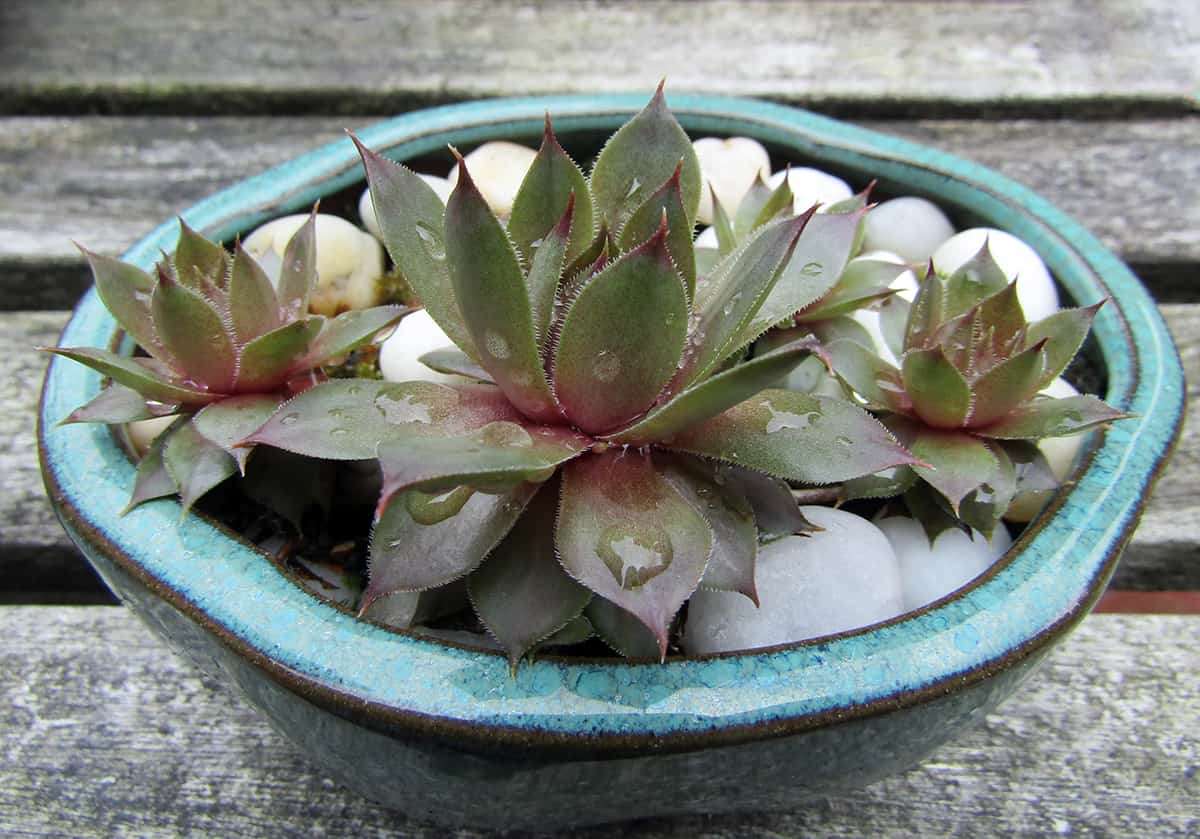
Sempervivum ‘Mahogany’s large rosettes display a rich, deep red hue that intensifies in cooler temperatures. This variety is hardy and easy to care for, thriving in well-drained soil.
You can identify ‘Mahogany’ by its thick, fleshy leaves that form tight clusters. They often resemble a rose pattern, which adds to their charm. If you provide this plant with full sunlight, you’ll notice its colors become more vibrant.
Propagation of ‘Mahogany’ happens through offsets. These small plants sprout from the base of the mother rosette, making it simple for you to increase your collection. Just separate the offsets when they have formed their own roots.
For the best growth, plant ‘Mahogany’ in an area where it gets plenty of light but is shielded from the harshest afternoon sun. Water it sparingly to mimic its natural, drought-tolerant environment.
Sempervivum ‘Terracotta Baby’
Sempervivum ‘Terracotta Baby’ is a succulent that you’ll find easy to grow. Its rosettes showcase a rich, terracotta hue. This color deepens with sun exposure and is brightest in the cooler months. You can expect a vibrant display in your garden.
Your ‘Terracotta Baby’ prefers full sun. It tolerates partial shade, especially in hotter regions. Ensure it gets enough light to maintain its unique color.
Be moderate with water. This plant is drought-tolerant. Water only when the soil feels dry to the touch. Avoid overwatering to prevent root rot.
This variety stays relatively small. It reaches about 4 inches in height and can spread up to 6 inches wide. The rosettes cluster closely together, giving a full, lush look.
Sempervivum ‘Emerald Empress’
Sempervivum ‘Emerald Empress’ is a perennial succulent. It is known for its vibrant green rosettes. Your garden will stand out with its rich, jewel-tone foliage.
This variety shows off its colors best in full sun. It is important to ensure good drainage. The ‘Emerald Empress’ will thrive with minimal water.
You can propagate the ‘Emerald Empress’ easily. By separating offsets, you increase your collection quickly. They are perfect for rock gardens, containers, and more.
Care for this plant is low maintenance. Protect it from extreme cold for best results. Your ‘Emerald Empress’ will be a hardy addition to your garden.
Sempervivum ‘Glowing Embers’
Sempervivum ‘Glowing Embers’ captivates with its unique coloration. You will find its deep red and purple hues to evoke the image of smoldering coals. This variety of Hens and Chicks is a stunning plant for your rock garden or container.
It thrives in full sun. You should provide well-drained soil to keep it healthy. Drought tolerance is a key feature of ‘Glowing Embers’, making it a low-maintenance choice for your garden.
During the growing season, rosettes stay compact. Offsets form readily, enabling easy propagation. You can enjoy these vibrant plants as they spread across your space.
Sempervivum ‘Saturn’
Sempervivum ‘Saturn’ is a distinct variety of Hens and Chicks. You’ll notice its rosettes have sharp, pointy leaves. The leaves’ tips often display a deep red hue, giving ‘Saturn’ its eye-catching appearance. In your garden, they add an accent with their unique coloring.
This plant thrives in well-draining soil. You need to ensure the soil is dry before watering again. ‘Saturn’ is drought-tolerant, so it’s perfect if you’re seeking low-maintenance plants. During the growing season, you’ll see it produces offsets, increasing your collection effortlessly.
‘Sempervivum ‘Saturn” is known for its resilience against cold weather. It can survive temperatures well below freezing. This makes it an ideal choice for gardens in cooler climates.
Sempervivum ‘Greenwich Time’
Sempervivum ‘Greenwich Time’ thrives in rocky soils. You will admire its evergreen rosettes. The plant’s foliage is tight and symmetrical.
This variety showcases vibrant colors. In sunlight, leaves display rich red tips. They contrast with the green bases. Its colors intensify during cooler months.
Sempervivum ‘Calcareum’
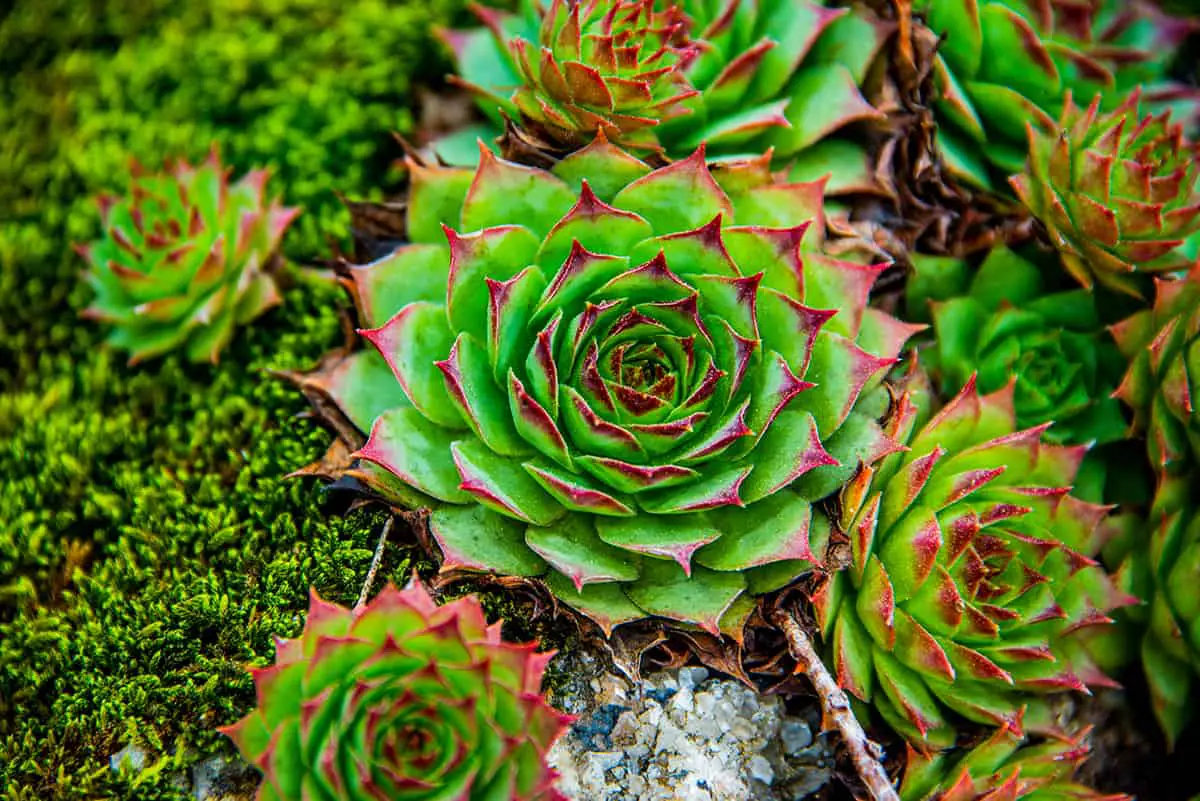
Sempervivum ‘Calcareum’ is a perennial succulent that thrives in your garden. It is also known as Houseleek. This plant exhibits a captivating rosette pattern with blue-green leaves tipped in burgundy. You will recognize ‘Calcareum’ by its unique coloration and robust form.
Typically, the plant reaches 4 to 6 inches in height and spreads 5 to 10 inches wide. ‘Calcareum’ is a slow grower, perfect for low-maintenance areas.
Cultivation needs are simple. Your Sempervivum ‘Calcareum’ prefers full sun to partial shade, especially in hotter climates. It is well-suited to USDA zones 5 through 10. When watering, do it deeply but infrequently, as ‘Calcareum’ is drought tolerant.
Maintenance involves minimal effort. Pruning isn’t frequently necessary. However, to manage its size and encourage propagation, you can prune the plant. It’s easy to propagate by separating the offsets, often referred to as ‘chicks’, from the main ‘hen’.
Sempervivum ‘Frost and Flame’
Sempervivum ‘Frost and Flame’ is a variety of hens and chicks. It features eye-catching foliage. In winter, the leaves turn a striking red. They border on the frosty green in the center.
This plant is known for its resilience. You can grow it in a range of conditions. It thrives in full sun to partial shade. It prefers well-drained soil.
Sempervivum ‘Frost and Flame’ makes a great container plant. Its vivid colors stand out in rock gardens too. It requires minimal water. This suits your busy lifestyle.
You’ll find it’s easy to propagate. Separate the offsets in spring or summer. It’s a simple way to expand your garden. They quickly produce a ground-covering mat.
Sempervivum ‘Tectorum’
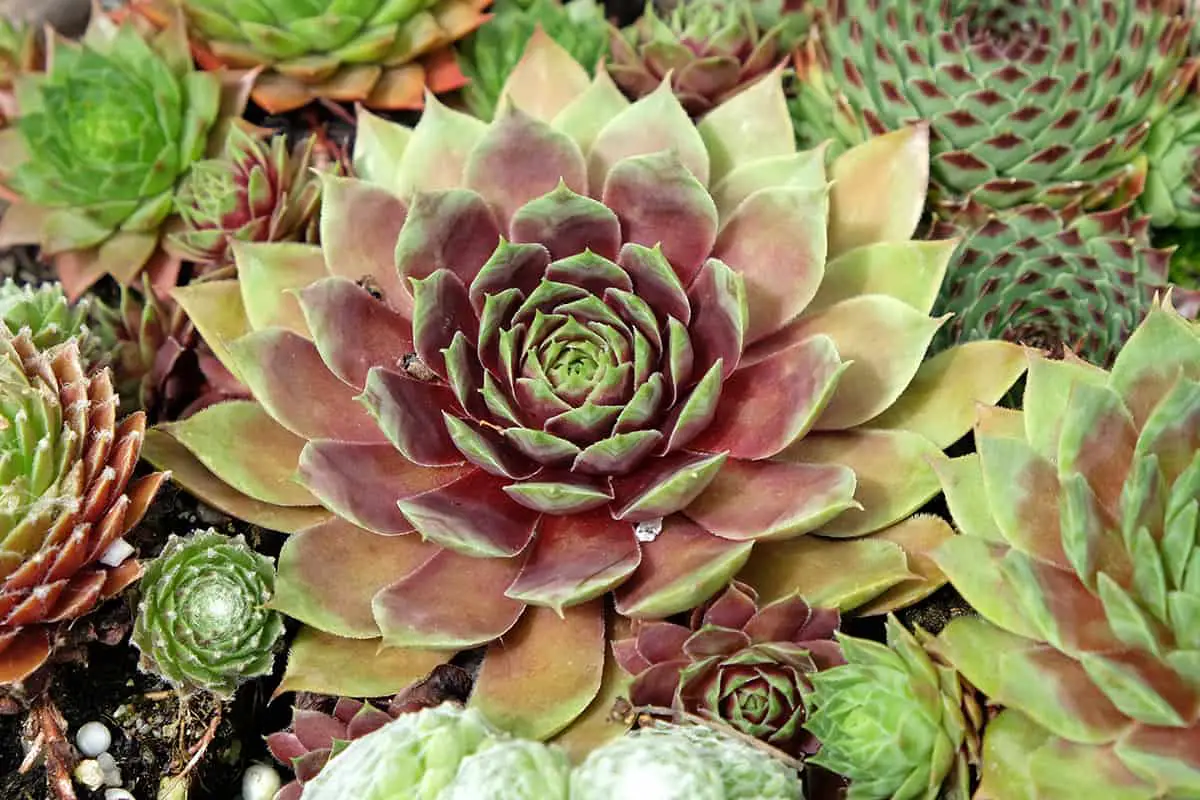
Sempervivum ‘Tectorum,’ is a succulent plant that demands your attention with its rosette shape and robust nature. These plants are aptly named for how they spread; the ‘hen’ is the main rosette, and the ‘chicks’ are the smaller offshoots.
These succulents are hardy and can endure in cold temperatures, making them a great choice for your outdoor space in a variety of climates. They require minimal water, relying on their thick leaves to store moisture, making them drought-tolerant. Sempervivum ‘Tectorum’ does best in well-draining soil, keeping its roots safe from rot.
Full sun to partial shade suits them well, ensuring they grow with vibrant color and health. You will find their colors ranging from green to red, adding a splash of interest wherever they are planted. These plants make for excellent container specimens due to their low maintenance and interesting appearance.
You’ll enjoy how easily they can be propagated. Simply separate the ‘chicks’ from the parent ‘hen’ and transplant them. This process will keep your garden full of life, continually replenishing itself with new growth.
